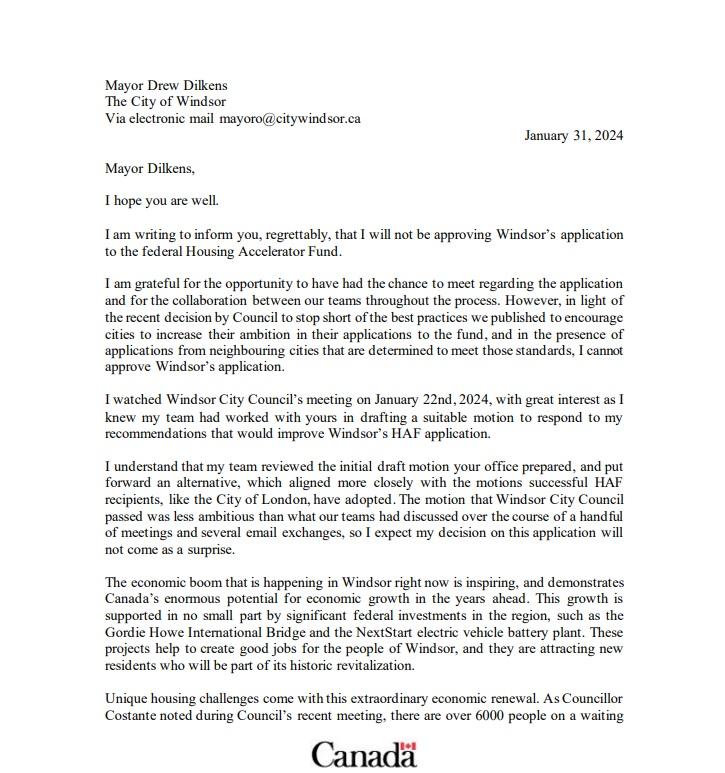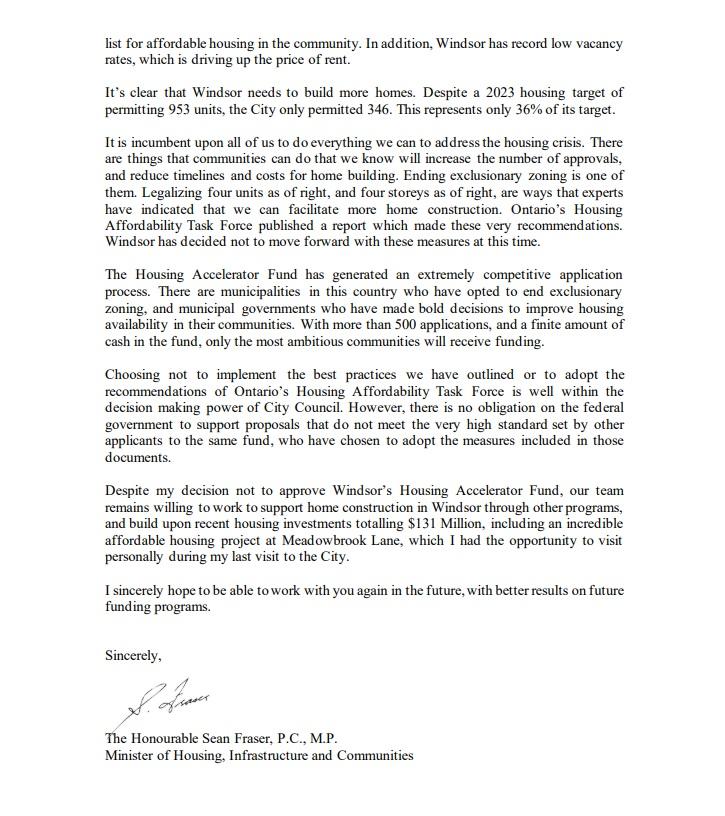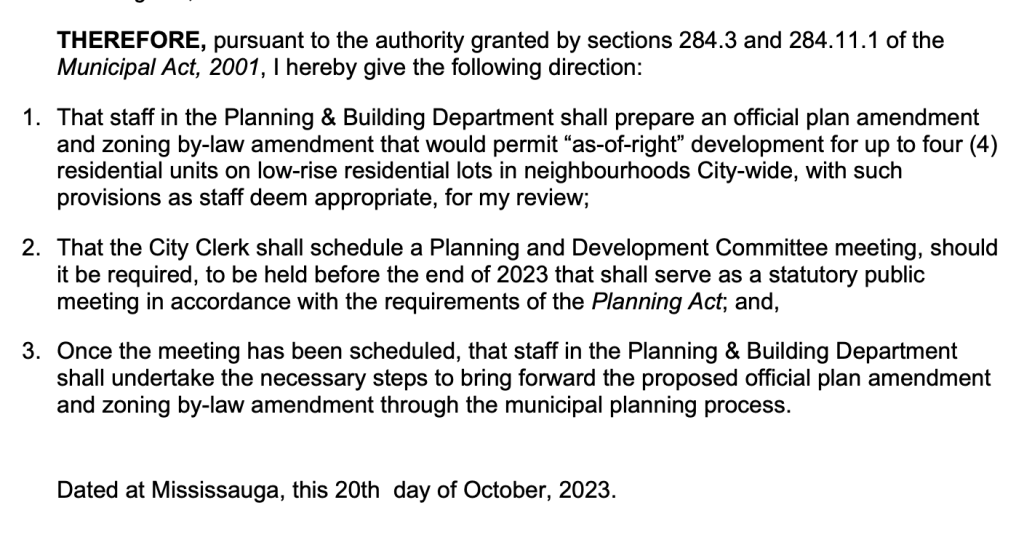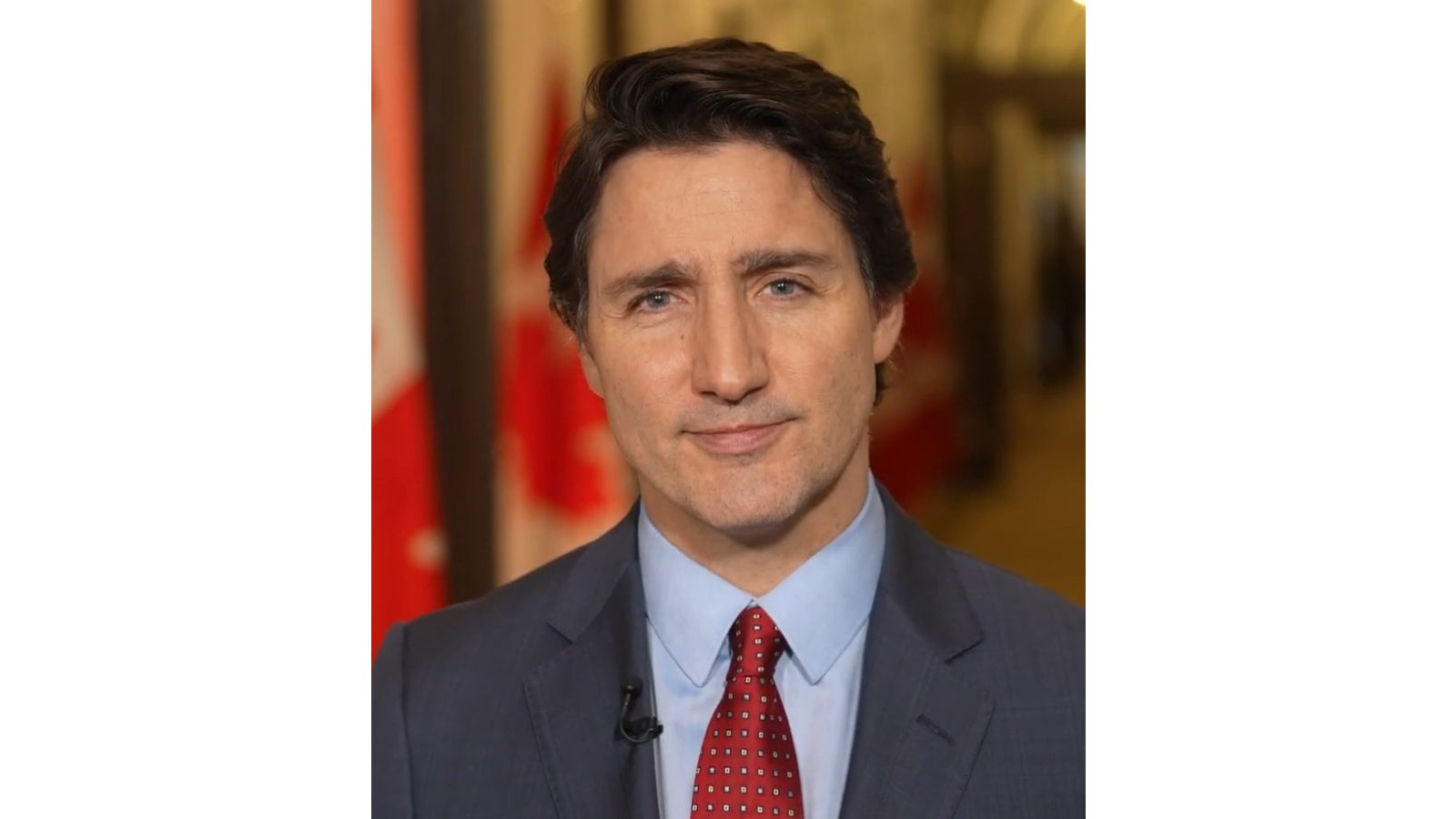As of April 15, 2024, Canada Mortgage and Housing Corporation (CMHC) received 544 applications for Housing Accelerator Fund (HAF) funding, of which 179 resulted in signed agreements and 365 unsuccessful agreements. Through these agreements with communities across Canada, the HAF will incentivize the creation of more than 100,000 newly permitted homes over the next three years, and over 750,000 over the next decade.
April 2, 2024 – the federal government announced that the 2024 budget would top up the Housing Accelerator Fund with an additional $400 million.
Project locations, funding and status
Enter your municipality or province or a funding program to see how much federal funding your elected representatives have secured to build housing in your community. Don’t see your community listed? Contact your local council members.
Last Updated: March 30, 2024
| Municipality | Province | Funding ($M) | 3-Year Goal | 10-Year Goal | Announcement | Action Plan | Letter from Housing Minister | Ask | Result | News |
|---|---|---|---|---|---|---|---|---|---|---|
| Abbotsford | British Columbia | 25.6 | 730 | 2,300 | February 12, 2024 | |||||
| Airdrie | Alberta | 24.8 | 900 | 3,500 | March 5, 2024 | Four units as-of-right | Report | |||
| Ajax | Ontario | 22 | 580 | 11,000 | January 19, 2024 | Action Plan | Four units as-of-right | Report | ||
| Barrie | Ontario | 25.6 | 680 | 4,100 | March 14, 2024 | Action Plan | Four units as-of-right | |||
| Bathurst | New Brunswick | 3 | 300 (4 communities) | 3100 (4 communities) | March 1, 2024 | |||||
| Brampton | Ontario | 114 | 3,150 | 24,000 | October 20, 2023 | Action Plan | Letter | Four storeys within 800m of transit | Four storeys within 800m of transit | |
| Brooks | Alberta | Letter | ||||||||
| Burlington | Ontario | 21 | 600 | 5,000 | January 15, 2024 | Action Plan | Four units as-of-right | Report | ||
| Burnaby | British Columbia | 43 | 1,290 | 11,340 | December 19, 2023 | Reconsider Metro Van DCC increases | No | Report | ||
| Calgary | Alberta | 228 | 6,800 | 35,000 | November 14, 2023 | Action Plan | Letter | Proceed with Calgary Housing Strategy | Proceed with Calgary Housing Strategy | Report |
| Cambridge | Ontario | 13.3 | 357 | 3,600 | March 7, 2024 | Report | ||||
| Campbell River | British Columbia | 10.4 | See Victoria | See Victoria | February 16, 2024 | Four units as-of-right | ||||
| Campbellton | New Brunswick | 4.5 | 130 | 460 | February 20, 2024 | Four units as-of-right | ||||
| Cap-Acadie | New Brunswick | 2 | 53 | 360 | March 4, 2024 | |||||
| Cape Breton / Unama’ki | Nova Scotia | 13.3 | 367 | 3,286 | February 22, 2024 | Six units by right | ||||
| Caraquet | New Brunswick | 2.7 | 300 (4 communities) | 3100 (4 communities) | March 1, 2024 | |||||
| Champdoré | New Brunswick | 3.8 | 198 (3 communities) | 1800 (3 communities) | March 4, 2024 | |||||
| Channel-Port aux Basques | Newfoundland | 3.3 | 90 | 390 | February 19, 2024 | |||||
| Charlottetown | Prince Edward Island | 10 | 300 | 1,000 | February 9, 2024 | Letter | Four units by right, more density near UPEI | Four storeys 800 m from UPEI | Report | |
| Chester | Nova Scotia | 2 | 330 (3 communities) | 1800 (3 communities) | March 11, 2024 | Report | ||||
| Communities in Alberta (Banff, Sylvan Lake, Bow Island, Westlock, Smoky Lake, Duchess) | Alberta | 13.8 | 400 | 3,100 | February 19, 2024 | |||||
| Comox | British Columbia | 5.2 | See Victoria | See Victoria | February 16, 2024 | Four units as-of-right | ||||
| Coquitlam | British Columbia | 25 | 650 | 2,800 | February 9, 2024 | Action Plan | ||||
| Cornwall | Prince Edward Island | 4.3 | 140 | 500 | February 23, 2024 | |||||
| County of Antigonish | Nova Scotia | 1.9 | 93 (total Town and County) | 270 (total Town and County) | March 13, 2024 | Report | ||||
| Edmonton | Alberta | 175 | 5,200 | 22,000 | February 21, 2024 | Action Plan | Three storeys, eight units | Report | ||
| Fredericton | New Brunswick | 10 | 300 | 2,500 | January 22, 2024 | Action Plan | Four units as-of-right | Report | ||
| Gibsons | British Columbia | 2.1 | 58 | 900 | March 14, 2024 | Action Plan | Medium-density and multi-family housing like townhouses and multiplexes | |||
| Grand-Bouctouche | New Brunswick | 2.9 | 198 (3 communities) | 1800 (3 communities) | March 4, 2024 | |||||
| Guelph | Ontario | 21.4 | 750 | 9,450 | January 12, 2024 | Action Plan | Four units as-of-right | Report | ||
| Halifax | Nova Scotia | 79.3 | 2,600 | 8,866 | October 12, 2023 | Action Plan | Letter | Four units by right, four storeys | Three storeys | Report |
| Hamilton | Ontario | 93 | 2,600 | 9,000 | October 10, 2023 | Action Plan | Letter | Four units as-of-right | ||
| Indian Island First Nation | New Brunswick | 0.4 | 198 (3 communities) | 1800 (3 communities) | March 4, 2024 | |||||
| Iqaluit | Nunavut | 8.9 | 160 | 1,450 | January 5, 2024 | Action Plan | Six storeys by right | Report | ||
| Kelowna | British Columbia | 31.5 | 950 | 20,000 | October 25, 2023 | Action Plan | Letter | |||
| Kings County | Nova Scotia | 6 | 330 (3 communities) | 1800 (3 communities) | March 11, 2024 | Report | ||||
| Kingston | Ontario | 27.6 | 900 | 4,800 | January 18, 2024 | Action Plan | Four units as-of-right | |||
| Kitchener | Ontario | 42.4 | 1,200 | 37,500 | November 3, 2023 | Letter | Four units by right | Four units as-of-right | Report | |
| London | Ontario | 74 | 2,000 | Unspecified | September 13, 2023 | Action Plan | Letter | Four units by right | Four units as-of-right | Report |
| Lunenburg | Nova Scotia | 1.1 | 330 (3 communities) | 1800 (3 communities) | March 11, 2024 | Report | ||||
| Marathon | Ontario | 1.9 | 60 | 300 | February 20, 2024 | |||||
| Markham | Ontario | 58.8 | 1,640 | 6,630 | March 12, 2024 | Four units as-of-right | Report | |||
| Milton | Ontario | 22 | 800 | 4,700 | January 22, 2024 | Action Plan | Letter | Four units as-of-right | ||
| Mississauga | Ontario | 113 | 3,000 | 35,200 | December 18, 2023 | Action Plan | Letter | Four units by right | Yes, via strong mayor directive | Report |
| Moncton | New Brunswick | 15.5 | 490 | 5,500 | November 16, 2023 | Letter | Four units as-of-right | |||
| Mount Pearl | Newfoundland | 6.1 | 180 | 2,000 | February 26, 2024 | Report | ||||
| New Glasgow | Nova Scotia | 3.3 | 190 | 2,100 | February 23, 2024 | |||||
| North Grenville | Ontario | 5.2 | 170 | 1,700 | March 1, 2024 | Action Plan | Up to three units on serviced lots | Report | ||
| North Vancouver | British Columbia | 18.6 | 500 | 3,100 | March 1, 2024 | Action Plan | Four, six, and eight units as-of-right, higher residential housing density near the urban core and close to transit | Report | ||
| Nunavut (Province) | Nunavut | 27 | 459 | 3,100 | January 5, 2024 | |||||
| Oakville | Ontario | Action Plan | Letter | Four units by right, density near Sheridan College | Four units by right, density near Sheridan College | Report | ||||
| Ottawa | Ontario | 176.3 | 4,400 | 32,600 | February 12, 2024 | Action Plan | Four units as-of-right | |||
| Pemberton | British Columbia | 2.7 | 98 | 1,995 | March 6, 2024 | Medium-density duplex and multi-family housing such as townhouses and multiplexes, and higher density as-of-right in specific areas | Report | |||
| Pictou | Nova Scotia | 0.775 | See New Glasgow | See New Glasgow | February 23, 2024 | |||||
| Quebec (Province) | Quebec | 900 | 8,000 social and affordable units | November 9, 2023 | ||||||
| Regina | Saskatchewan | 35 | 1,000 | 3,000 | February 9, 2024 | Action Plan | Letter | Four storeys within 400m of frequent transit | Four storeys within 400m of frequent transit | Report |
| Richmond | British Columbia | 36 | 1,000 | 3,100 | January 22, 2024 | |||||
| Richmond Hill | Ontario | 31 | 780 | 41,500 | November 27, 2023 | Action Plan | Letter | |||
| Saint John | New Brunswick | 9.1 | 285 | 1,700 | January 17, 2024 | Action Plan | Four units as-of-right | Report | ||
| Saskatoon | Saskatchewan | 41.3 | 940 | 25,200 | October 16, 2023 | Action Plan | Letter | Four storeys within 800m of rapid transit | Four units by right, four storeys within 800m of rapid transit | Report |
| Shipagan | New Brunswick | 2.3 | 300 (4 communities) | 3100 (4 communities) | March 1, 2024 | |||||
| Squamish | British Columbia | 7 | 200 | 1,300 | January 23, 2024 | Action Plan | ||||
| St. Catharines | Ontario | 25.7 | 700 | 12,000 | January 17, 2024 | Action Plan | Four units as-of-right | Report | ||
| St. John's | Newfoundland | 10.4 | 280 | 4,100 | March 14, 2024 | Letter | Four units by right, cut permit times | Four units as-of-right | Report | |
| Stratford | Prince Edward Island | 5 | 180 | 2,000 | March 14, 2024 | Report | ||||
| Summerside | Prince Edward Island | 5.8 | 132 | 725 | January 9, 2024 | Four units by right | ||||
| Surrey | British Columbia | 95.6 | 2,800 | 16,500 | January 10, 2024 | Action Plan | Reconsider Metro Van DCC increases | No | Report | |
| Tecumseh | Ontario | 4.4 | 137 | 5,850 | March 4, 2024 | Action Plan | Report | |||
| Three Rivers | Prince Edward Island | 3.4 | 116 | 400 | March 15, 2024 | Report | ||||
| Thunder Bay | Ontario | 20.7 | 600 | 6,500 | February 29, 2024 | Action Plan | Four units as-of-right | Report | ||
| Toronto | Ontario | 471 | 12,000 | 53,000 | December 21, 2023 | Action Plan | Letter | More height and density near transit, like BC | More height and density near transit, like BC | |
| Town of Antigonish | Nova Scotia | 1.3 | 93 (total Town and County) | 270 (total Town and County) | March 13, 2024 | Report | ||||
| Township of Woolwich | Ontario | 6.7 | 190 | 1,600 | February 22, 2024 | Four units as-of-right | ||||
| Tracadie | New Brunswick | 2.5 | 300 (4 communities) | 3100 (4 communities) | March 1, 2024 | Four units as-of-right | ||||
| Vancouver | British Columbia | 115 | 3,200 | 40,000 | December 15, 2023 | Action Plan | Off-arterial housing | |||
| Vaughan | Ontario | 59 | 1,700 | 40,000 | October 5, 2023 | Action Plan | Letter | (no further requirements) | Four units as-of-right | |
| Victoria | British Columbia | 18 | 900 | 16,000 | February 16, 2024 | Six units by right | ||||
| Waterloo | Ontario | 22 | 650 | 15,000 | February 2, 2024 | Four storeys city-wide | Report | |||
| West Hants | Nova Scotia | 1 | 40 | 1,500 | March 12, 2024 | |||||
| Westville | Nova Scotia | 1.5 | See New Glasgow | See New Glasgow | February 23, 2024 | |||||
| Whitby | Ontario | 25 | 650 | 18,000 | January 23, 2024 | Four units as-of-right | ||||
| Whitehorse | Yukon | 11 | 190 | 3,900 | February 28, 2024 | Report | ||||
| Windsor | Ontario | Denied due to insufficient application | Four units by right | Report | ||||||
| Winnipeg | Manitoba | 122 | 3,166 | 15,000 | December 20, 2023 | Action Plan | Letter | Four storeys within 800m of transit | Four units by right, Four storeys within 800m of transit | Report |
| Wolfville | Nova Scotia | 1.8 | 45 | 280 | February 21, 2024 | Action Plan | ||||
| Maple Ridge | British Columbia | Denied due to program funding maxed out | Report | |||||||
| Langley | British Columbia | Denied due to program funding maxed out | Report | |||||||
| Port Coquitlam | British Columbia | Denied due to program funding maxed out | Report | |||||||
| White Rock | British Columbia | Denied due to program funding maxed out | Report | |||||||
| Delta | British Columbia | Denied due to program funding maxed out | Report | |||||||
| Belleville | Ontario | 22.3 | Denied | Report | ||||||
| Quinte West | Ontario | 3 | Denied | Action Plan | Didn't propose four units as-of-right | |||||
| Prince Edward County | Ontario | 14.2 | Denied | Report |
Data is gathered from CMHC updates, Howard Chai at Storeys and Vancouver Needs More Housing, an excellent Substack about Canadian housing by Russil Wvong, a software developer based in Vancouver and federal Liberal riding chair for Vancouver Kingsway.
What is the Housing Accelerator Fund (HAF)?
The Housing Accelerator Fund (HAF) is a federally-funded, application-based program and part of the federal National Housing Strategy (NHS) which aims to increase the supply of market housing by incentivizing municipalities to make changes that will:
- Grow housing supply faster than their historical average
- Increase densification
- Speed-up approval times
- Tackle NIMBYism and establishing inclusionary zoning bylaws
- Encourage public transit-oriented development
Municipalities are given money in exchange for making lasting structural and regulatory changes that will make it easier to create new housing.
The top priority for any municipality looking to get federal funding is to end exclusionary zoning:
HAF best practices – CMHC
- Upzoning: Stop low-density zoning and regulation that excludes housing types such as affordable and social housing in residential areas.
- Encourage high density by allowing mixed-use development and high-density residential as-of-right within proximity to urban cores and transit corridors.
- Adopting by-laws to adopt more as-of-right zoning measures, from the number of units to storeys.
First introduced in the Government of Canada’s 2022 Budget and launched in March 2023, it is a $4B initiative from the federal Liberal government that will run until 2026-27. The first announcement was in September 2023, for London, Ontario.
Progress on the HAF and other NHS programs are updated quarterly at placetocallhome.ca. The Housing Funding Initiatives Map shows the social, affordable and market housing that have been developed with NHS funding.
For more details on the program’s impact, read the statement on the Housing Accelerator Fund progress from the Honourable Sean Fraser, Minister of Minister of Housing, Infrastructure and Communities. Here, you’ll find examples of letters from Minister Fraser to municipalities that have been approved for Housing Accelerator Funding. These letters can provide you with more insights into how this program is removing barriers to housing supply and improving affordability.
How does it work?
To get the money, municipalities must submit an application including an action plan with at least 7 different initiatives to grow housing supply and speed up housing approvals, and to:
- Develop an action plan as part of their HAF application. The purpose of the action plan is to outline supply growth targets and specific initiatives to grow housing supply and speed up housing approvals.
- Commit to a housing supply growth target within the action plan that increases the average annual rate of growth by at least 10%. The annual growth rate must also exceed 1.1% (the national average).
- Complete or update a housing needs assessment report. This requirement may be waived if the applicant recently completed or updated a housing needs assessment.
The action plan will include:
- A housing supply growth target, which reflects the total number of permitted housing units projected with HAF
- Additional targets related to the type of housing projected, as well as affordable housing
- Proposed initiatives such as measures to increase density, revise parking requirements, enhance processes or systems, etc. that will help the applicant achieve their committed targets and support the objectives of the program. There is flexibility for CMHC to consider alternative initiatives proposed by applicants.
In practice, common initiatives include:
- 4 units as-of-right
- Medium-density and multi-family housing like townhouses and multiplexes
- Reduce or eliminate off-street parking requirements for housing developments
- Strategy to develop municipally-owned “surplus” lands for affordable and rental housing
- Waiving fees for affordable and supportive housing development applications
- Rezoning commercial land to allow for residential and new commercial development
- Introducing zoning revisions that will remove barriers restricting multi-unit developments
- Establish pre-approved design plans for medium-density and multi-family homes such as townhouses and multiplexes
- Implement e-permitting systems for accepting and issuing development permit applications to streamline housing applications and reduce wait times
The funding is flexible so that municipalities can decide what the funds are needed for, such as:
- Capacity (ie. a surge of planners)
- Offsets for land purchases
- Underlying infrastructure
- Offset policies like inclusionary zoning
Housing Accelerator Fund money is released in installments. After an initial installment, municipal governments must fulfill the requirements as outlined in their agreement with the federal government. Sometimes that means amending an existing policy, other times it may be creating an entirely new program. After meeting the requirements outlined in their agreement, further installments are then released.
What does 4 units as-of-right mean?
A municipal zoning bylaw that allows 4 units “as-of-right” means allowing up to 4 units (“fourplexes”) per existing residential property without the need to apply for rezoning, so the development could be done without public consultation or special permissions.
The 4 units could include:
- Up to 3 units in primary building, including secondary basement/in-law suite
- 1 unit in an outbuilding/garage sometimes known as a “laneway suite”, “garden suite” or “coachhouse”
Before the HAF, special zoning approvals were needed to build fourplexes in many Ontario municipalities.
In November 2022, the Ford government mandated triplexes (3 units as-of-right) in Ontario in Bill 23, More Homes Built Faster Act.
Changing municipal zoning bylaws to allow 4 units as-of-right has been recognized as a “minimum ticket” to receiving HAF funding and are a good example of what is referred to as “missing-middle housing” as they are more affordable.
Example HAF applications
Many municipalities across Canada have accepted the strings attached and been awarded funding.
Municipalities that do not submit sufficient applications have received open letters from Minister of Housing Sean Fraser telling them that in order their application to be approved, they need to do specific things, like allowing fourplexes everywhere, or more height and density near frequent transit.
With few exceptions, they’ve accepted these requirements, in exchange for the one-time funding.
Quebec
Quebec reached an agreement with the federal government to get $900M (around 1/4 of the HAF), matched by the Quebec government, to build 23,000 additional homes, with 8,000 being non-market housing. Quebec’s estimate of the cost to build a non-market home is considerably lower than $500K: the combined federal and provincial funding is $1.8B, which would build 8000 homes if they’re $225K each.
In Quebec, unlike the rest of the country, there’s a provincial law which prevents municipalities from negotiating directly with the federal government. (Municipalities are creations of the province, so they only have powers which are delegated to them by the province.)
Vancouver Needs More Housing
Kitchener, Ontario awarded $42.4M
On October 17, 2023 Kitchener city council voted unanimously to allow four units per lot. On November 3, 2023 Sean Fraser announced that he had approved Kitchener’s Housing Accelerator application, providing $42.4 million for the city to fast track 1,200 housing units over the next 3 years and 37,500 homes over the next 10 years.
If spent directly by the federal government to build homes, $42M would build about 80 homes at $500K each. However, by using that money to make it easier for homes to be built, the 3-year target is 15x that, and the 10-year target is more than 400x.
Mississauga Mayor Bonnie Crombie uses Strong Mayor powers to approve fourplexes
October 3, 2023 – Sean Fraser wrote a letter to Mayor Bonnie Crombie requesting 4 additions to their application before their funding could be approved, including 4 units as-of-right city-wide:
October 11, 2023 – Mississauga council failed to pass a motion supporting fourplexes in a 5-5 tie, so the city was denied funding believed to be $120M.
voting in favour along with the Ward 2 representative
- For: Parrish, councillors Chris Fonseca, Joe Horneck and Martin Reid, Alvin Tedjo
- Against: Brad Butt, Damerla, Kovac, Mahoney and Dasko against.
Housing Minister Sean Fraser wrote the following letter to Acting Mayor Chris Fonseca on October 19, 2023:
October 20, 2023 – Mayor Crombie used her strong mayor powers to override council’s vote and allow 4 residential units as-of-right city-wide:
Calgary
- June 2022 – Established a housing and affordability task force
- May 2023 – Released its recommendations
- June 6, 2023 – Council had voted 8-7 to reject the recommendations, fearing voter reaction
- June 7, 2023 – Council voted 10-5 to reconsider, and subsequently voted 14-1 to move ahead with an amended motion, allowing more time for discussion and the final decision.
- September 14, 2023 – Sean Fraser wrote an open letter to Calgary mayor Jyoti Gondek saying that unless Calgary city council approved its missing-middle plan, Calgary would not receive Housing Accelerator funding:
I understand that key elements of this housing action plan will either be approved or rejected at this week’s Council meeting. In light of this, I wish to inform you that Calgary’s Housing Accelerator Fund application will not be approved unless you follow through to create the new missing middle zoning designations of H-GO and R-CG, as you laid out in your application. Otherwise said, in order to receive a positive decision from me on your application – you must end exclusionary zoning in your city.
This is intergovernmental relations as diplomacy (“persuasion, compromise, pressure”), with Sean Fraser using the Housing Accelerator Fund as a negotiating element (“to receive a positive decision from me”), rather than a technocratic approval to be made by someone within CMHC.
Russil Wvong
September 16, 2023 – Calgary approved the plan on a 12-3 vote.
Municipalities denied funding
Windsor refuses to change zoning bylaw from 3 units as-of-right to 4, denied $40M to $70M in funding
A staff report to council warned:
Significant uptake could have an impact on established neighbourhoods by changing the landscape that residents did not anticipate, and making demands on services such as sewer capacity, traffic, parking, enhance flooding issues, etc
Increasing the number of units permitted must consider the infrastructure and environmental impacts.
City of Windsor staff
On January 22, 2024, Windsor city council reaffirmed their existing zoning rules that permit up to 3 residential units as-of-right in an 8-3 vote, refusing to change zoning rules to allow for greater housing density. Councillors Kieran McKenzie, Fabio Costante and Renaldo Agostino voted against reaffirming the zoning bylaws.
Without question, there is an urgent need for more homes, here and all across the country
As mayor of the city of Windsor, I am steadfast in my commitment to safeguard Windsor neighbourhoods and the vital infrastructure that supports them.”
I refuse to compromise our neighbourhoods and to do away with fair public consultation with our residents in exchange for uncertain funding that will be tied to sacrificing the makeup of our communities.
Windsor Mayor Drew Dilkens
On January 31, 2024, Federal Housing Minister Sean Fraser sent a rejection letter to Windsor Mayor Drew Dilkens:


Windsor had already been allowing 3 units as-of-right including one in a main dwelling and one as an accessory dwelling unit since 2020, so 4 units-by-right would have added one additional possible unit.
Windsor would have received at least $40M, and up to $70M in federal funding from the HAF.
Prince Edward County
The County applied for up to $14.2 million after completing the Prince Edward County Housing Plan 2023 to 2028.






Comments
We want to hear from you! Share your opinions below and remember to keep it respectful. Please read our Community Guidelines before participating.